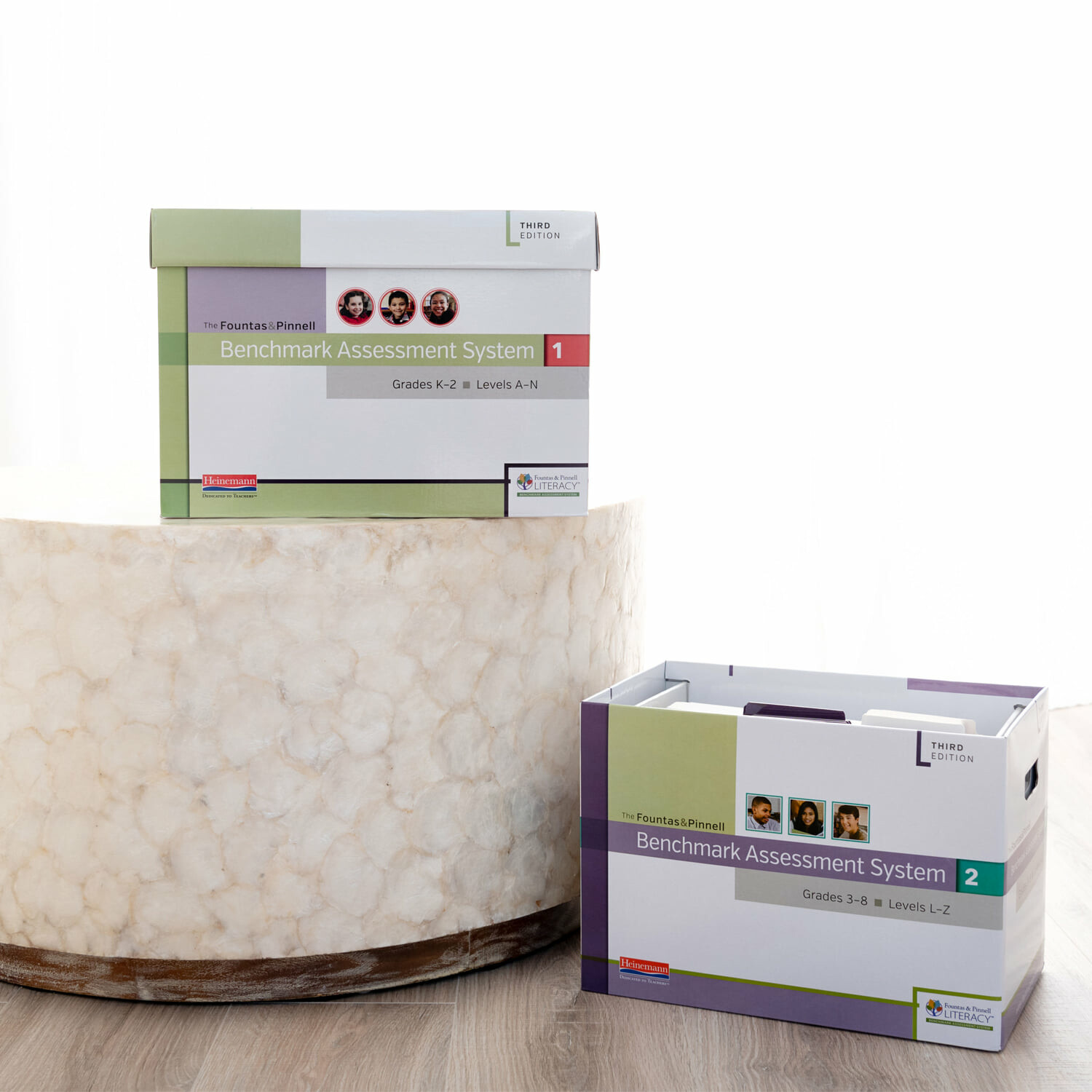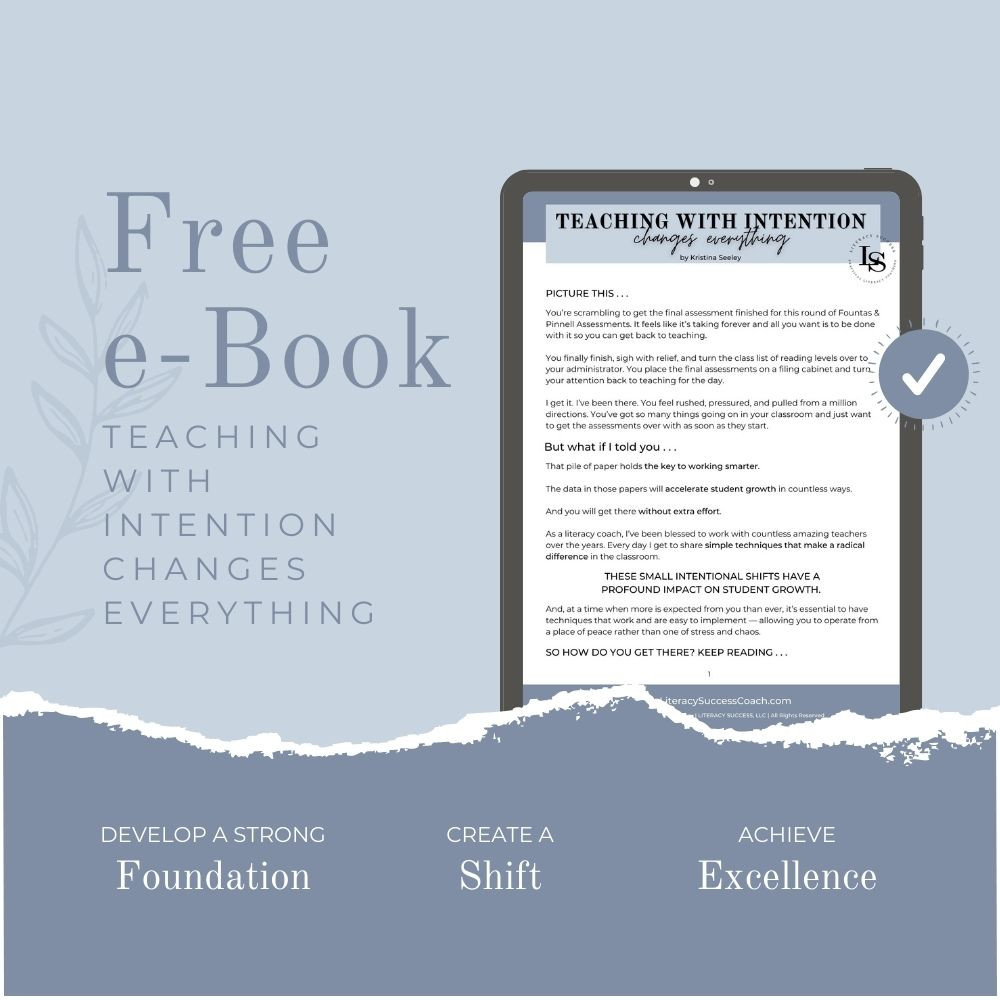Time to dig deep.
Practical literacy instruction for educators.
Time to dig deep.
Practical literacy instruction for educators.
Time to dig deep.
Practical literacy instruction for educators.
Not because you don’t know what you’re doing. In fact, you’re doing an amazing job. You prepare thoughtful lessons, inspire a love of learning, and care deeply about each student. And it shows.
It’s time to enhance teacher thinking and generate better results. Because most teachers don’t have unlimited time to analyze all that data and do something with it.
Most teachers are busy juggling endless paperwork, lesson plans, administrative meetings, communication with parents ...
Not because you don’t know what you’re doing. In fact, you’re doing an amazing job. You prepare thoughtful lessons, inspire a love of learning, and care deeply about each student. And it shows.
It’s time to enhance teacher thinking and generate better results. Because most teachers don’t have unlimited time to analyze all that data and do something with it.
Most teachers are busy juggling endless paperwork, lesson plans, administrative meetings, communication with parents ...
CHOOSE YOUR CADENCE
Self-directed
Want formal training.
Like to work at their own pace.
Prefer to work alone.
Will ask for support as needed.
Expert-led
Want formal training.
Can commit to a full day.
Prefer interaction.
Want to ask questions LIVE.
CHOOSE YOUR CADENCE
Self-directed
Want formal training.
Like to work at their own pace.
Prefer to work alone.
Will ask for support as needed.
Expert-led
Want formal training.
Can commit to a full day.
Prefer interaction.
Want to ask questions LIVE.
CHOOSE YOUR CADENCE
Self-directed
Want formal training.
Like to work at their own pace.
Prefer to work alone.
Will ask for support as needed.
Expert-led
Want formal training.
Can commit to a full day.
Prefer interaction.
Want to ask questions LIVE.
 Identify goals for instruction.
Identify goals for instruction. Elevate reading levels.
Elevate reading levels.  Celebrate student growth.
Celebrate student growth.- Identify goals for instruction.
- Elevate reading levels.
- Celebrate student growth.

Part 1: Administer the Fountas & Pinnell Benchmark Assessment
Learn to administer the Fountas & Pinnell Benchmark Assessment in a standardized way.
Results drive instruction, so it’s essential for teachers to learn how to use the assessment data to discover teaching opportunities that speak to student strengths and weaknesses.
This section includes specific tutorials that provide ample practice to administer the assessment in a standardized way, following guidelines that minimize administrative discrepancies.
Whether you’re new to the material or want to refresh or expand your literacy expertise, you’ll walk away feeling confident in your ability to evaluate student levels from A-Z.

Part 1: Administer the Fountas & Pinnell Benchmark Assessment
Learn to administer the Fountas & Pinnell Benchmark Assessment in a standardized way.
Results drive instruction, so it’s essential for teachers to learn how to use the assessment data to discover teaching opportunities that speak to student strengths and weaknesses.
This section includes specific tutorials that provide ample practice to administer the assessment in a standardized way, following guidelines that minimize administrative discrepancies.
Whether you’re new to the material or want to refresh or expand your literacy expertise, you’ll walk away feeling confident in your ability to evaluate student levels from A-Z.

Part 1: Administer the Fountas & Pinnell Benchmark Assessment
Learn to administer the Fountas & Pinnell Benchmark Assessment in a standardized way.
Results drive instruction, so it’s essential for teachers to learn how to use the assessment data to discover teaching opportunities that speak to student strengths and weaknesses.
This section includes specific tutorials that provide ample practice to administer the assessment in a standardized way, following guidelines that minimize administrative discrepancies.
Whether you’re new to the material or want to refresh or expand your literacy expertise, you’ll walk away feeling confident in your ability to evaluate student levels from A-Z.
Part 2: Analyze the Data
Learn to optimize all that data to be efficient and focused in your reading instruction to deliver the lessons students need most.
More often than not, teachers scramble to get assessments done, turn in reading levels, and resume teaching without taking time to review the results.
In this section, teachers learn how to use the data to discover student strengths and find teaching opportunities that drive instruction. They’re empowered to take what they learn and create a clear vision for their class, small groups, and individual students.

Part 2: Analyze the Data
Learn to optimize all that data to be efficient and focused in your reading instruction to deliver the lessons students need most.
More often than not, teachers scramble to get assessments done, turn in reading levels, and resume teaching without taking time to review the results.
In this section, teachers learn how to use the data to discover student strengths and find teaching opportunities that drive instruction. They’re empowered to take what they learn and create a clear vision for their class, small groups, and individual students.


Learn to make intentional instructional decisions.
In this section, you learn to take the data and match results to instruction that matters. This allows teachers to focus on student needs that propel them forward in responsive ways, rather than wasting time over-teaching skills they’ve already shown mastery in.
This approach works best when teachers have effective teaching resources to utilize.
The components of Fountas & Pinnell Classroom include Interactive Read Aloud and Guided Reading Sets. Although this training focuses on interactive and guided reading instruction, the practical tips and mindset easily work in other areas of the literacy framework, such as Shared Reading, Book Clubs, and Independent Reading & Conferring. Leveled Literacy Intervention is also a valuable, effective resource for those needing reading intervention.
And, if you’re not using these specific resources, it’s easy to apply the thinking and strategies to the resources you’re already using for reading instruction.

Learn to make intentional instructional decisions.
In this section, you learn to take the data and match results to instruction that matters. This allows teachers to focus on student needs that propel them forward in responsive ways, rather than wasting time over-teaching skills they’ve already shown mastery in.
This approach works best when teachers have effective teaching resources to utilize.
The components of Fountas & Pinnell Classroom include Interactive Read Aloud and Guided Reading Sets. Although this training focuses on interactive and guided reading instruction, the practical tips and mindset easily work in other areas of the literacy framework, such as Shared Reading, Book Clubs, and Independent Reading & Conferring. Leveled Literacy Intervention is also a valuable, effective resource for those needing reading intervention.
And, if you’re not using these specific resources, it’s easy to apply the thinking and strategies to the resources you’re already using for reading instruction.

Learn to make intentional instructional decisions.
In this section, you learn to take the data and match results to instruction that matters. This allows teachers to focus on student needs that propel them forward in responsive ways, rather than wasting time over-teaching skills they’ve already shown mastery in.
This approach works best when teachers have effective teaching resources to utilize.
The components of Fountas & Pinnell Classroom include Interactive Read Aloud and Guided Reading Sets. Although this training focuses on interactive and guided reading instruction, the practical tips and mindset easily work in other areas of the literacy framework, such as Shared Reading, Book Clubs, and Independent Reading & Conferring. Leveled Literacy Intervention is also a valuable, effective resource for those needing reading intervention.
And, if you’re not using these specific resources, it’s easy to apply the thinking and strategies to the resources you’re already using for reading instruction.
Discover key strategies that combine with a clear, effective vision to create lasting change in the classroom.
Discover key strategies that combine with a clear, effective vision to create lasting change in the classroom.




DISCLAIMER | PRIVACY POLICY | MEMBER AREA | TERMS AND CONDITIONS | DESIGNS BY TIFFANIE TEEL

